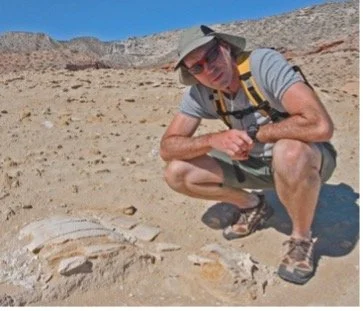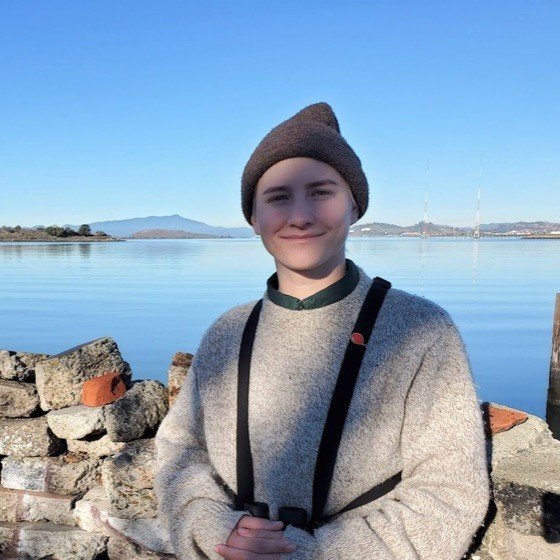Our research grant awards program sets us apart from other nonprofits.
Now more than ever, scientists and students need help funding research that is critical to our ability to better understand cetaceans and the impacts of human activities and climate change on their populations and habitats. The American Cetacean Society, San Francisco Bay Chapter is proud to be able to support important research through grants funded by your generous donations. Listed below are the many talented grant recipients whose research is building the body of scientific knowledge of cetaceans so that better decisions can be made about how to conserve and protect them.
We hope the stories of the grant recipients, below, will inspire you to make a gift to support important cetacean research and the development of new marine scientists!
2024 Research Grant award Reciepients
Izzy Szczepaniak Cetacean Research Grant
Thank you, ACS SF Bay community member donors! We are thrilled to announce our grant awards – made possible by your donations – for the 2024 Izzy Szczepaniak Cetacean Research Grant. We are supporting two research projects and vetted the applications based on factors of quality and importantly, the ability of the research to further cetacean conservation. Please meet our awardees and learn about their research. We will also be happily anticipating their presentations as speakers in our monthly events.
Jessie Meyer for “Linking Unoccupied Aerial Systems and Vessel-Based Assessments of Blue Whale Body Condition in the Eastern North Pacific”
My interest in marine and cetacean science began around 15 years ago when I first saw wild dolphins off the coast of California while on vacation to see my family. I remember thinking how graceful these animals looked as they effortlessly glided through the water. I wondered how they perceived the world around them. Since then, I have pursued an education in marine science and ecology to understand marine mammals and their place within the greater ocean ecosystem. As the recipient of the 2024 Izzy Szczepaniak Cetacean Research Grant, I am excited to utilize these funds to pursue publication of my masters research on blue whale body condition in the Eastern North Pacific. As the ocean continues to face severe consequences from anthropogenic disruption, it is important to continue to understand the complex ecological relationships within this sensitive environment.
Tom Jefferson for “The Decline of Dall’s Porpoise (Phocoenoides dalli) in the Eastern North Pacific: An Investigation into the Severity, Causes, and Possible Solutions”
This grant means a great deal to me, as I have been studying Dall's porpoise (off and on) for 41 years and it is a species that is very near and dear to my heart. I am concerned about the conservation status of this species along our coast, and I want to make sure that it receives the attention it deserves. My interest in marine and cetacean biology stems back to my childhood, watching television programs and movies about these fascinating animals. I hope that our joint efforts can help to make a more secure future for this species in a world that is increasingly threatened by human exploitation and disregard for the environment.
2023 Research Grant award
Nicola Ransome
recipient of the Christine Fitzsimmons cetacean research grant
Dr. Nicola Ransome at work on a research vessel, photo courtesy of Nicola Ransome
It is with great pleasure that we announce our 2023 Christine Fitzsimmons Cetacean Research Grant recipient, Dr. Nicola Ransome. Nico Ransome is a whale biologist and newly minted Ph.D. Her research is in the spatial ecology of humpback whales in mainland Mexico. As an associate of the Aquatic Megafauna Research Unit at Murdoch University in Western Australia, she runs a research project in Mexico, helps run another project in El Salvador, and contributes to research in Rarotonga in the Cook Islands. Her primary research focus is on the study of anthropogenic impacts on large whales of the Eastern Tropical Pacific. She is using the grant proceeds in her ongoing research for a threatened “distinct population segment” (DPS) of humpback whales, whose migratory corridor is Central America through the west coast of North America. The research is focused on seasonal (early season) timing and identification of the whales through tail flukes and the Happywhale identification platform.
We are delighted to be able to support her project and look forward to hearing from Nico at a monthly speaker event before the end of 2024. She will share her findings and the impact of the results from this empirical research.
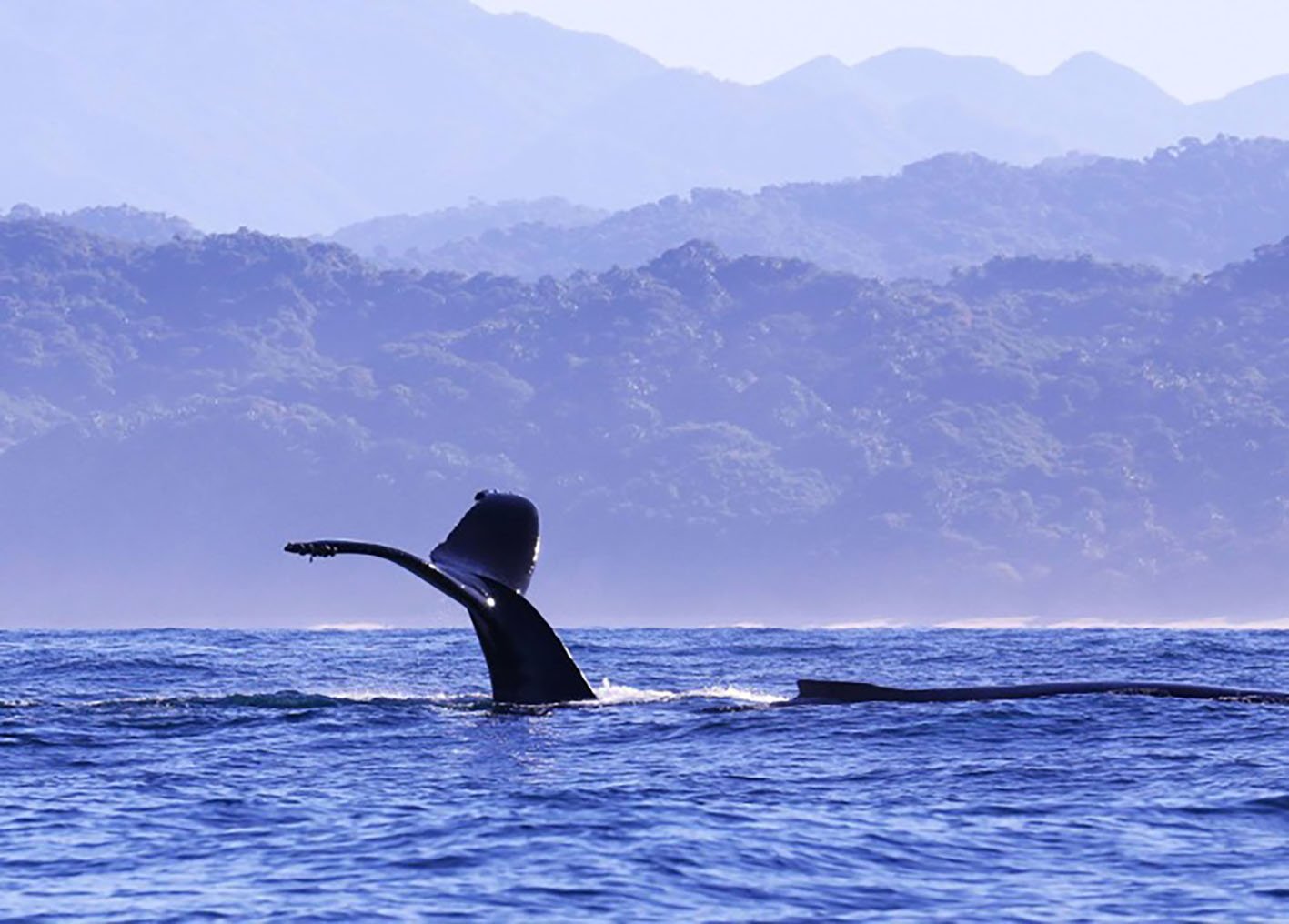
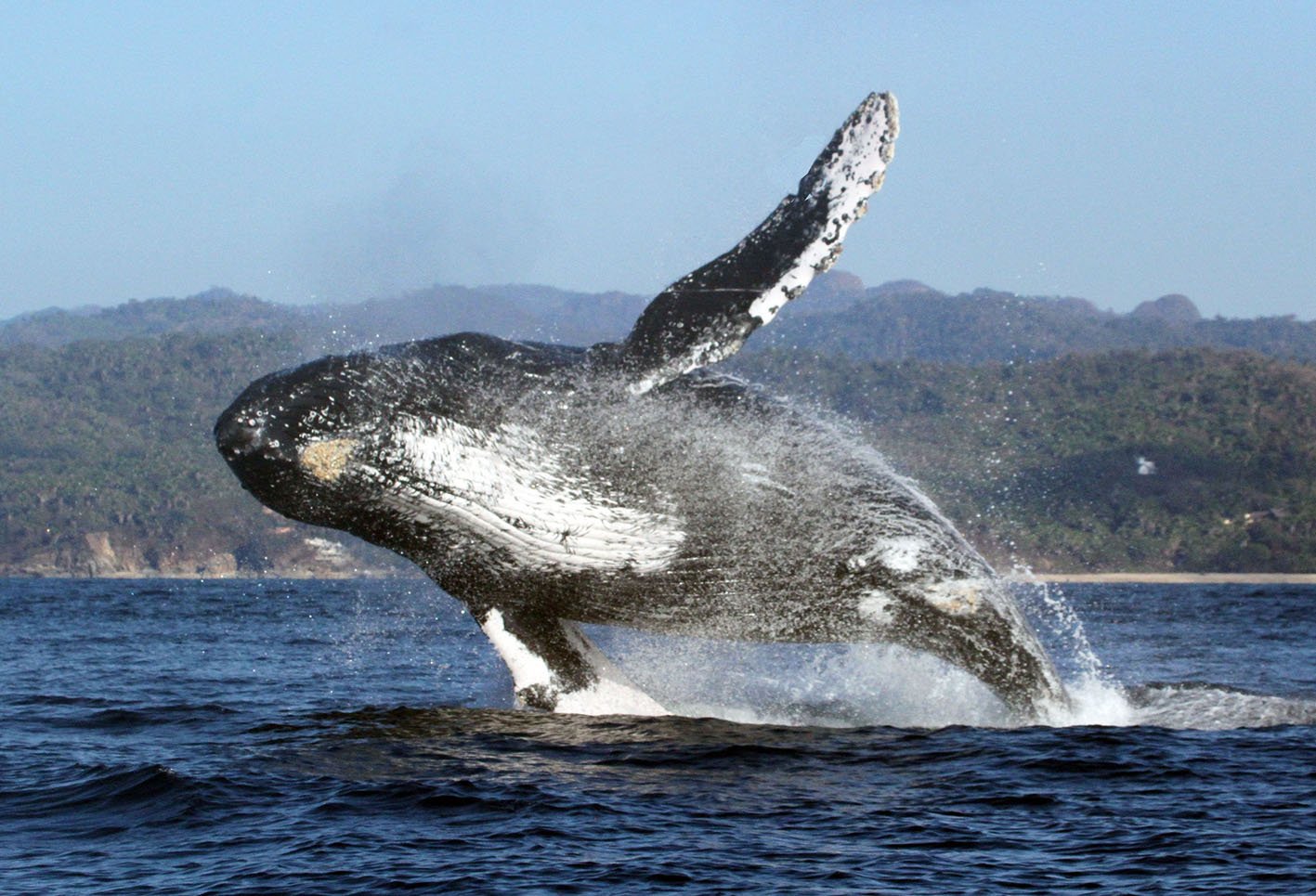
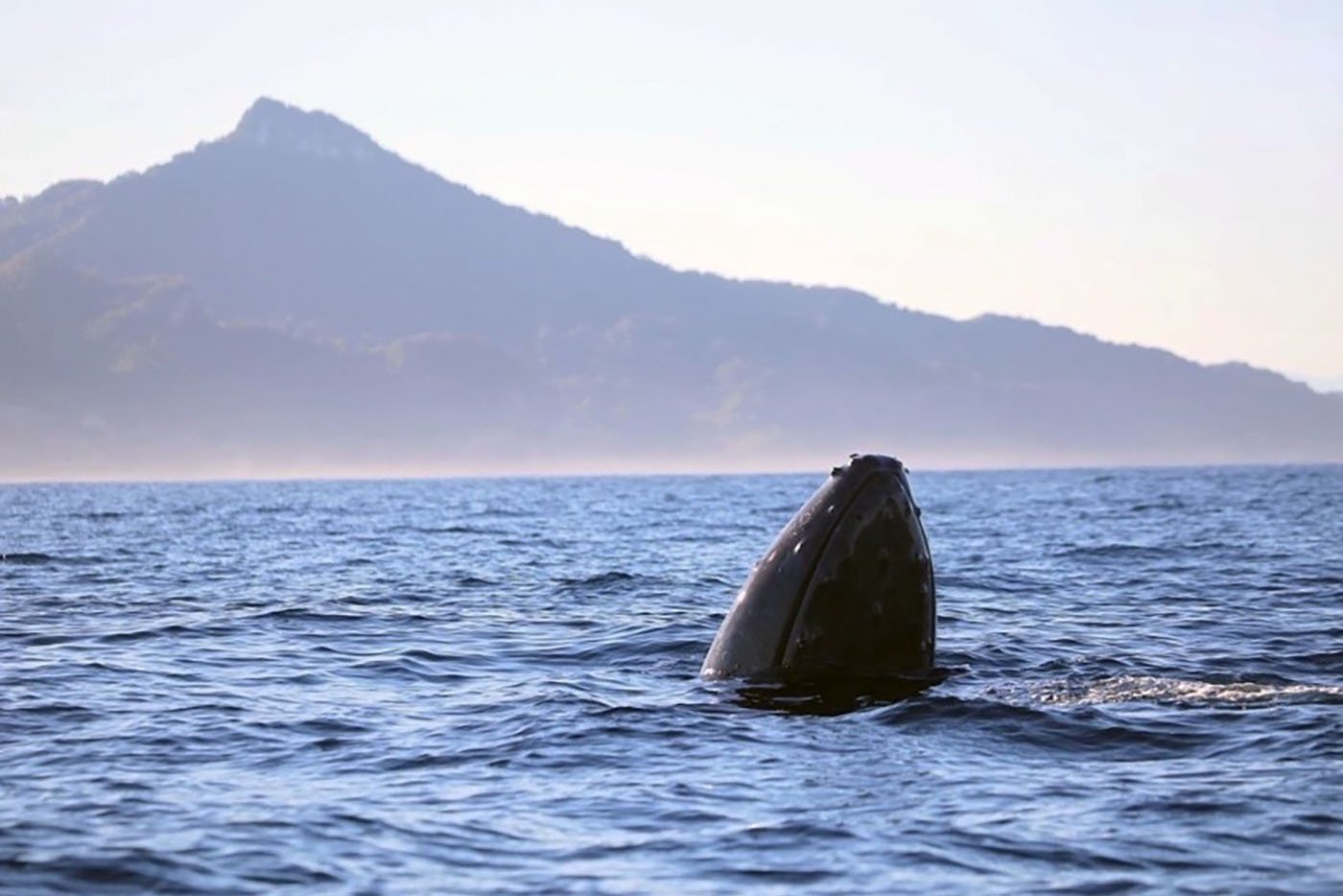
2021 Research Grant awards
It is with great honor that we announce our 2021 Research Grant recipients. Bekah Lane, M.S. Education, and Ph.D. student at San Francisco State University is the recipient of the 2021 Jonathan Stern Cetacean Research Grant. Kelly DeForest, B.S. Environmental Science and M.S. student at San Francisco State University is the recipient of our inaugural Isidore Szczepaniak Cetacean Research Grant. Allison Payne, M.S. Interdisciplinary Marine and Estuarine Science, and Ph.D. student at the University of California, Santa Cruz is the recipient of our inaugural Christine Fitzsimmons Cetacean Research Grant. These remarkable San Francisco Bay Area graduate students are conducting research that will contribute valuable information toward efforts to understand and reduce anthropogenic threats to Pacific humpback whales, blue whales, beaked whales, and California gray whales. We are delighted to support their work and look forward to learning about their findings.
BEKAH LANE
recipient of the Jonathan Stern cetacean Research Grant
Rebekah Lane has an M.S. in Education from Fort Hays State University. She is currently pursuing an M.S. degree in Interdisciplinary Marine and Estuarine Sciences, San Francisco State University, Estuary and Ocean Science Center.
Although she grew up in landlocked Wichita, Kansas, Bekah has always been passionate about the ocean and marine mammals. Currently, as a graduate student in Dr. Ellen Hines’ lab, she studies the risk of ship strikes to humpback whales in San Francisco Bay. Her thesis, “Whales in a Highly Urbanized Estuary: Evaluating Risk of Ship Strike to Humpback Whales in San Francisco Bay,” aims to create a model for ship strike risk to humpback whales to inform management decisions for vessels in the bay.
Bekah also enjoys her work as a naturalist at The Oceanic Society and as a Program Coordinator for Field Research and Response at The Marine Mammal Center.
KELLY DEFOREST
RECIPIENT OF THE ISIDORE SZCZEPANIAK cetacean RESEARCH GRANT
Kelly DeForest has a B.S. in Environmental Science and Natural Resource Management from the University of Washington and is currently pursuing a Master of Science in Geographic Information Science and Cartography program at San Francisco State University. Prior to graduate school, they worked as a GIS analyst. Their research is being conducted under Dr. Ellen Hines in the Marine and Coastal Conservation and Spatial Planning Lab at the Estuary and Ocean Science (EOS) Center, and in partnership with Dr. Jaime Jahncke at Point Blue Conservation Science.
Kelly’s research aims to inform how oceanographic variability and climate change impacts migratory patterns of baleen whales in the Santa Barbara Channel (SBC), and how human-whale geographies may be altered by shifts in migration timing. To explore these relationships, they are analyzing 20 years of humpback, blue, and gray whale sightings collected by the Channel Islands Naturalist Corps. With these data, they will use statistical modeling methods to examine interannual and long-term trends in the arrival and departure of baleen whales to and from the SBC, as well as fine-scale habitat use in relation to environmental variables. They also plan to explore the capacity of environmental variables to predict migration timing and habitat use. The results of this research will assist in guiding future vessel speed reduction timing in the SBC and inform policy measures to reduce vessel strike risk.
Kelly also enjoys their work as a Marine Mammal and Seabird Observer at The Marine Mammal Center, and as a Surveyor at the Greater Farallons Association.
ALLISON PAYNE
RECIPIENT OF THE CHRISTINE FITZSIMMONS Cetacean RESEARCH GRANT
Allison Payne has an M.S. in Interdisciplinary Marine and Estuarine Science from the Hines Lab at San Francisco State University’s Estuary and Ocean Science Center. For her thesis, she collaborated with Cascadia Research Collective to document the accumulation of entanglement scars on central Californian humpback whales over time.
She received her undergraduate degree in Cognitive Science from the University of California, Berkeley, and has worked in labs around the world studying everything from squirrels to ancient whale fossils.
Allison is currently a graduate student in the Beltran Lab at the University of California Santa Cruz, where she is working on her Ph.D. in Ecology and Evolutionary Biology. Her research will involve instrumenting northern elephant seals with acoustic recorders to listen for beaked whales in the North Pacific Ocean.
Allison also enjoys her work as a Research Associate with the Marine Mammal Center as a part of their Cetacean Field Research team, where they study harbor porpoises, humpback whales, gray whales, and bottlenose dolphins. She has worked as a naturalist on marine ecotourism operations in the Bay Area since 2016 and has led hundreds of offshore wildlife trips into the Gulf of the Farallones. She is a licensed captain as well as a science communicator through her personal project, WhaleGirl.
2018 jonathan stern Research Grant awaRDS
It is with great honor that we announce our inaugural Jonathan Stern Research Grant recipients, Lindsay Young and Anna Costanza. These remarkable San Francisco Bay Area graduate students will be conducting research that will contribute valuable information toward efforts to reduce anthropogenic threats to Pacific humpback whales and harbor porpoises. The grants they received will support their research projects in addition to enabling their participation in the 2018 American Cetacean Society International Conference.
lindsay young
Graduate Student at Estuary and Ocean Science Center, San Francisco State University, Tiburon, CA.
M.A. Science Education, University of California Santa Cruz, Santa Cruz, CA. Robert Noyce Teacher Fellowship recipient.
Analysis of Harbor Porpoise Blubber to Track Changes in Persistent Organic Pollutants in and Around San Francisco Bay
Ms. Young will be chemically analyzing blubber samples of harbor porpoises collected by the Marine Mammal Center to create a temporal catalog of persistent organic pollutants (POPs) found in and around San Francisco Bay. By using this extensive sample collection, she will be able to track changes in POPs affecting harbor porpoises off the coast of California. This analysis may provide insight into the reappearance of harbor porpoises in San Francisco Bay and continued risks of bioaccumulation in our local food webs. She also aims to explore the potential of harbor porpoises as a sentinel species for other marine mammals, similar to previous studies of California sea lions in San Francisco Bay as sentinel species for humans, and alerting us to health risks in our local watershed.
In the future, Ms. Young plans to develop partnerships between scientific institutions and Bay Area public schools that foster innovative conservation strategies and allow students to gain hands-on experience in scientific research.
Anna Costanza
Graduate Student at Estuary and Ocean Science Center, San Francisco State University, Tiburon, CA.
M.S. Interdisciplinary Marine & Estuarine Sciences, San Francisco State University, Estuary and Ocean Science Center, Tiburon, CA.
B.A. Environmental Science and Ecology from Goshen College, Goshen, IN.
Use of Bycatch Risk Assessment to Assess the Exposure of Humpback Whales to Incidental By-Catch Off the Northern Coast of Peru
Ms. Costanza plans to use an open source, spatially explicit toolbox called ByRA (Bycatch Risk Assessment) to assess the exposure of humpback whales to incidental by-catch within small-scale fisheries in two towns, Zorritos and Mancora, off the northern coast of Peru. This toolbox takes an interdisciplinary approach incorporating existing data, enables input from local scientists and communities, and produces spatial knowledge, and weighted risk area maps. These visualizations will help expedite the available information for decisions makers and fishers in reducing encounters of marine mammal bycatch. This framework can be a template for future risk assessments for more complex multi-species cetacean bycatch in net fisheries in western South America.
2017 Research Grant awards
Alicia Amerson
Scripps Institution of Oceanography (SIO), University of California, San Diego La Jolla, CA
M.A.S in Marine Biodiversity and Conservation June 2015
Founder, OneOcean Nexus, Sacramento, CA April 2017 - present
Legislative Aide, Office of the Lieutenant Governor Gavin Newsom, California State Senate Sacramento, CA Jan 2017 - April 2017
OneOcean Nexus Unmanned Aerial Vehicle (UAV) Training Program: Creates Pilots to Assist Large Whale Disentanglement Teams in California
Unmanned Aerial Systems or Vehicles (UASs, UAVs, aka. drones) are a new technological device that changes the way biologists observe, monitor, and protect cetaceans. The primary investigators are recent graduates of the Scripps Institution of Oceanography Center for Marine Biodiversity and Conservation program, who have spent significant time observing whales around the world, and we have seen a significant rise in UAV’s along our coastline in California which has driven our interest to research the impacts of drones. We set out at the beginning of 2017 to develop global standards for UAS flown over marine wildlife and in marine habitats. OneOcean Nexus is working to develop best practices for flying UAVs over marine life and habitats in conjunction with scientists, government regulators, NGOs, whale-watching companies, and commercial industry. In addition to being licensed UAV pilots we provide educational and outreach opportunities for pilots who fly in marine air spaces. Our mission is to create and provide licensed pilots for assistance in emergency large whale disentanglement responses and also convert marine mammal projects that use manned aircraft to survey marine mammals to unmanned surveys to reduce risk to human lives and minimize anthropogenic impacts to all cetaceans, all the while increasing the quality of data collected.
katerina Audley
Founder/Director: Whales of Guerrero Research Project 2013 - present
The Whales of Guerrero Research Project (WGRP)
WGRP is a successful and replicable project that collaborates with local communities to promote conservation and understanding of marine mammals and local marine systems through research, educational outreach and capacity-building activities. Our humpback whale research study is the crux of our education and capacity building work. We will complete our final year of a five-year, 1500-hour field study of humpback whales and dolphins in the region. Marine mammals had not been studied in the state of Guerrero until WGRP began. Since 2013, we have identified 16 species of whales and dolphins in our region. We have discovered that the humpback whales in our region are part of the endangered Central America humpback whale group – of which there are only about 400 individuals. Of the 195 individual whales we have collected fluke IDs for, 108 of them have been re-sighted in other regions. 76 of these re-sightings have occurred in the San Francisco Bay Area or extended Northern California to Washington region. Prior to our work, many of these whales had not been seen in Mexico or other winter calving and breeding grounds before. Connecting the breeding and calving grounds for humpback whales to their preferred feeding and traveling corridors in the San Francisco Bay Area will help to establish governmental regulations both in the US and Mexico that will lead to humpback whales’ increased long term protection.
Cristina Casillas López
Graduate student at Laboratorio de Ecología de Cetáceos del Centro Interdisciplinario de Ciencias Marinas, Instituto Politécnico Nacional, México
Biochemical Role of the Blue Whale in the Southwestern Gulf of California
Nutrients play a key role in the ocean by controlling the productivity of the surface layer (Redfield, 1958). These nutrients can be supplied by different routes, wind process from the mainland to the sea and from greater depths to the euphotic zone (Jickell & Moore, 2015). Studies in marine environments and experimental systems revealed that iron and other metals, in addition to nitrogen and phosphorus, play a key role in the composition of the plankton structure, regulation of primary phytoplankton productivity, and nitrogen fixation in diazotrophs, among other processes (Martin, 1990; Sunda, 2012). An additional source comes from marine mammal feces (Roman & McCarthy, 2010). Until recently, the primary biogeochemical role of marine animals was believed to be restricted to their participation in the carbon cycle through their consumption and conversion into rapidly sinking fecal matter or returning it to the atmosphere through breathing (Ratnajarah et al., 2014). Thus most of the nutrients bound to sinking organic matter were considered lost for surface biota and only a portion of them, after being returned to their inorganic forms by microbial action, could be available in the euphotic zone by processes such as upwellings, which occur in limited ocean regions (Roman et al., 2014). However, recent studies suggest that marine mammals and seabirds are part of a positive feedback cycle (recycling) that conserves other nutrients in surface waters, thereby improving primary productivity (Nicol et al., 2010). The vertical propagation capacity of marine mammals can be especially important because they participate in the return of part of the nutrients when feeding in deep water and excreting in surface waters (Wing et al., 2014). This action moves nutrients incrementally to the euphotic zone that would otherwise be confined to deep water or integrated into the sedimentary organic matter of the ocean bottom (Roman et al., 2014).
Logan J. Pallin
Ph.D. Ecology and Evolutionary Biology – University of California Santa Cruz, Santa Cruz, CA.
National Science Foundation Graduate Research Fellow, University of California Santa Cruz, Long Marine Laboratory, Santa Cruz, CA.
Comparative Study of Humpback Whale Demography Along the Western Antarctic Peninsula and California Coast: Links to Regional Environmental Variation
Climate change is now considered one of the main ecological stressors impeding the health of many biological populations and ecosystems worldwide (2). The potential response to climate change by cetaceans has been visited multiple times by expert panels and working groups (i.e. International Whaling Commission (IWC), however, no clear consensus has been established (3). Rather, it is thought that cetacean vulnerability to climate change will likely depend on a multitude of factors, such as population size and growth, habitat range and change, and diet specificity and or plasticity (4). Humpback whales feeding along the Western Antarctic Peninsula (WAP) are recovering in one of the fastest warming regions on the planet. Scientists have documented a temperature rise of 5 degrees centigrade since 1950, which is causing a decrease in the annual winter sea ice duration (5). Additionally, along the coast of California, humpback whales are recovering steadily in an environment that appears to be less susceptible to climatic changes currently (6). Assessing population demographics is paramount in understanding the impacts of previous, as well as current, perturbations on biological populations. Humpback whales were hunted extensively 100 years ago and their subsequent recovery around the world is occurring in the face of rapid climate changes. To begin to understand the dynamics and variation in the recovery of these two populations under varying rates of climatic change, we propose to study the current demographics of these populations (e.g. sex ratios and pregnancy rates). We hope to build off the demographic studies conducted by Casey Clark et al. 2016 on humpback whales feeding along the coast of California (7). By assessing the temporal variation in the demographic parameters of these two humpback whale populations, we believe it will be possible to discern how each has deferentially responded to extensive commercial harvest and continued habitat change.
David Cade
Pursuing a Ph.D. in Biology at Hopkins Marine Station, Stanford University, Stanford, CA.
M.S. in Earth, Ocean, & Atmospheric Science, Oregon State University, Corvallis, OR.
M.A. in Education and California Single-Subject Teaching Credential in Mathematics, Stanford University, Stanford, CA.
Foraging Behavior of Rorquals in Monterey Bay, Part 2
The resource consumption and energetic demands of large cetaceans has been a topic of much study. Research into cetacean energetics stems both from ecological interest, since baleen whales have unique life histories, but also from management priorities that seek to understand the recovery of endangered species as well as to prevent the potential conflicts of top predators with human fisheries. Estimations of energy and resource use for these animals have historically had errors of an order of magnitude or more since cetacean studies have intrinsic logistical challenges. However, a new technique yet to be tested fully on baleen whales has recently been developed in other species to determine body density from accelerometer tag data. Since humpback whales add lipids throughout the foraging season, these additional lipid layers should manifest as a measurable change in body density. By calculating this change and additionally measuring feeding rate, prey density, prey type and whale size in a stable, feeding population of North Pacific humpback whales, I hope to validate this tool and develop a better method for determining prey consumption by humpback whales. This proposal seeks funding for field work based in Monterey Bay, CA that would enable these calculations using data collected both early and late in the foraging season from a stable population of humpback whales. The end product would be a tool to determine biomass consumption that could directly inform management decisions regarding this large North Pacific predator that is recovering from centuries of human exploitation throughout its range.
Samantha Cope
M.S. student at Romberg Tiburon Center for Environmental Studies, San Francisco State University, Tiburon, CA.
Evaluating the Influence of Vessel Noise on the Underwater Soundscape of
San Francisco Bay
As maritime activities increase worldwide (Frisk 2012), underwater noise from vessels is of growing concern for marine mammals who use sound to sense and navigate their environment, forage, and choose mates (Payne and Webb 1971, Tyack and Clark 2000). Vessel noise is often the primary component elevating ambient noise levels in urbanized areas (Williams et al. 2014). In the California Current System, increasing ambient noise levels (Andrew et al. 2002) are attributed to a concurrent increase in commercial shipping traffic in the region (McDonald et al. 2006). Large ocean-going shipping vessels coexist with heavy recreational traffic and waterborne public transportation in the highly-urbanized San Francisco Bay (SFB). Several cetacean species recently began entering SFB, including harbor porpoise (Phocoena phocoena), bottlenose dolphin (Tursiops truncates), and humpback whale (Megaptera novaeangliae), highlighting the need to better understand its underwater acoustic conditions. This research will determine to what extent underwater vessel noise raises ambient noise levels within a region of SFB and potential impacts on local cetacean species using three objectives: 1) determine source levels for primary vessel types in use within the study area, 2) compare source levels to ambient conditions, and 3) determine the distance from each vessel type that species may become disturbed. When combined with spatial and temporal vessel 3 distribution trends, results will help marine mammal researchers and managers understand the threats cetaceans face from vessels when they enter San Francisco Bay.
Kaytlin Ingman
M.S. student in Marine Science, Romberg Tiburon Center for Environmental Studies, San Francisco State University / Point Blue Conservation Science, Tiburon, CA
Long Term Trends in Baleen Whale Observations Near the Farallon Islands
The California Current System (CCS) is productive due to the upwelling that occurs in the spring and summer (Lynn & Simpson, 1987), which attracts baleen whales to the area to feed (Busquets-Vass et al, 2017). Blue (Balaenoptera musculus), humpback (Megaptera novaeangliae) and gray whales (Eschrichtius robustus) have been frequently studied in the CCS because of their importance as top predators (Pyle and Gilbert, 1996; Moore, 2011, Baker et al, 2013). These species have been documented altering both feeding and migrating behavior based on changing marine ecosystem processes (Benson et al, 2002; Fleming et al, 2015; Ramp et al, 2015). Drivers of these changes come from interannual basin-wide variability which include El Niño/Southern Oscillation (ENSO), Pacific Decadal Oscillation (PDO), and North Pacific Gyre Oscillation (NPGO). These climate patterns alter SST, nutrients, wind direction, salinity, chlorophyll and coastal upwelling (Mantua et al, 1997; Di Lorenzo et al, 2008; García-Reyes & Largier, 2010, Racault et al, 2017). We can use observations of baleen whale usage of the CCS as a proxy for ecosystem health and aid in the management and conservation of these species. Baleen whale counts have been taken on the Farallon Islands since the 1970’s by Point Blue Conservation Science scientists (Pyle and Gilbert, 1996) and continue today. I propose to use a portion of this dataset (from 1987-2015) to assess significant changes occurring in the seasonal abundance patterns of migratory baleen whales near the Farallon Islands. Because the study area is located in a National Marine Sanctuary, this work will add to existing knowledge used to manage the Sanctuary and the conservation of these species. Research objectives: My research questions use data on baleen whale abundance in the Greater Farallon area between 1987 and 2015. By addressing abundance changes over a 29 year period I can then ask if basin-scale climate patterns have any effect on when baleen whales use the area.
Michelle Modest
PhD Candidate at the Department of Ecology and Evolutionary Biology, UC Santa Cruz, Santa Cruz, CA
Effects of Climate Change Driven Sea Ice Variation on Humpback Whale Movement
and Foraging Ecology
The overarching goal of Conservation Biology is to identify, understand, and minimize negative human driven effects on biodiversity. One of the most pressing current topics is understanding the consequences of climate change on various ecosystems across the globe. This study seeks to uncover the effects of climate change on humpback whale foraging and movement behavior in one of the most rapidly warming areas of the world – the Western Antarctic Peninsula. The research will be conducted by faculty and graduate students at UCSC in conjunction with the Palmer Station Antarctica Long Term Ecological Research Project (LTER). The Palmer Station LTER is an interdisciplinary polar marine research program that has been active in the peninsula since 1990. This will be the first study to look at spatial and temporal patterns of humpback movement and foraging behavior in relation to changes in physical environment and prey abundance over a span of multiple years. The research will culminate in a comprehensive quantitative model that illuminates and predicts effects of long-term and episodic sea-ice variation on humpback whale foraging behavior and movement. In addition to this comprehensive model, multiple finer-scale research projects will be conducted to unearth information that will be used as building blocks for the model. Topics of interest include humpback whale migratory triggers, long-term changes in the ratio of area restricted search (foraging) to transiting of humpbacks in the peninsula, a more detailed understanding of krill distribution and life cycle, potential competition between Adélie penguins and humpback whales, and techniques to extrapolate more fine scale data from current satellite data using knowledge of behavior gleaned from DTAG data.
2017 Travel Grant awards
David Cade
Dense, spatially limited but vertically extensive patches of krill drive the formation of super-groups of migrating humpback whales off South Africa’s west coast
What drives the formation of closely-aggregated super-groups of humpback whales during the austral spring migration? (driven from information in Findlay et al. 2017) Patchiness- the density and distribution of groups of prey in scattered aggregations- has been shown to be a key driver in the foraging success of predators (Hazen et al. 2009, Benoit-Bird et al. 2013, Hazen et al. 2015). Recently, evidence has also been accumulating that patchiness may be one of the driving forces of the evolution of collective behavior in social animals (Gordon 2014). The formation of temporally transient and spatially coherent supergroups of up to 200 humpback whales in the Benguela Current off Western South Africa demonstrates both of these characteristics. This region is the only one of its kind where aggregations of such numbers have been reported (Findlay et al. 2017). Yet, while foraging is a suspected driver of supergroup formation, confirmation of deep-feeding behavior and the density and distribution of the prey driving this behavior will be reported for the first time.
Samantha Cope
Mapping vessel distribution in San Francisco Bay for improved spatial risk assessments and habitat suitability modeling of local marine mammal species
This study will spatially and temporally quantify all vessel traffic within a defined study area in SFB. Vessel traffic variability will be evaluated using three objectives: 1) investigate vessel distribution patterns by vessel type, 2) investigate the distribution pattern of vessel speeds by vessel type, and 3) determine if significant differences in vessel-use exist between commonly defined seasons in the region: winter assigned to January-March, spring assigned to April-June, summer assigned to July-September and autumn assigned to October-December (Forney and Barlow 1998, Becker et al. 2014, Jensen et al. 2015). Results will contribute to the growing inventory of human use maps within coastal areas and provide methodology for collecting meaningful vessel traffic data.
Kaytlin Ingman
Long Term Trends in Baleen Whale Observations Near the Farallon Islands
The California Current System (CCS) is productive due to the upwelling that occurs in the spring and summer (Lynn & Simpson, 1987), which attracts baleen whales to the area to feed (Busquets-Vass et al, 2017). Blue (Balaenoptera musculus), humpback (Megaptera novaeangliae) and gray whales (Eschrichtius robustus) have been frequently studied in the CCS because of their importance as top predators (Pyle and Gilbert, 1996; Moore, 2011, Baker et al, 2013). These species have been documented altering both feeding and migrating behavior based on changing marine ecosystem processes (Benson et al, 2002; Fleming et al, 2015; Ramp et al, 2015). Drivers of these changes come from interannual basin-wide variability which include El Niño/Southern Oscillation (ENSO), Pacific Decadal Oscillation (PDO), and North Pacific Gyre Oscillation (NPGO). These climate patterns alter SST, nutrients, wind direction, salinity, chlorophyll and coastal upwelling (Mantua et al, 1997; Di Lorenzo et al, 2008; García-Reyes & Largier, 2010, Racault et al, 2017). We can use observations of baleen whale usage of the CCS as a proxy for ecosystem health and aid in the management and conservation of these species. My research questions use data on baleen whale abundance in the Greater Farallon area between 1987 and 2015. By addressing abundance changes over a 29 year period I can then ask if basin-scale climate patterns have any effect on when baleen whales use the area. My research questions are: In the past 29 years, how have blue, humpback, and gray whale abundance near the Farallon Islands changed? Does interannual oceanographic variability in CCS the effect the timing of baleen whale arrival, duration, and departure at the Farallon Islands?
Logan J. Pallin
Pregnancy Rates of Humpback Whales Along the Western Antarctic Peninsula: Links to a Changing Ecosystem
Humpback whales are one of a few of the principal sympatric krill predators central to the long-term ecological research (LTER) project based out of Palmer Station, an American research base located on the southern end of Anvers Island. Anvers island is centrally located within the Palmer LTER study region. The WAP region in general is unique among the rest of the Antarctic, due to its distinctive north-south geographic orientation as well as the magnitude of climatic changes central to the northern WAP region [1]. The Palmer LTER (PAL) began in 1990 on the premise of documenting nearshore biological and physical processes, of which included the extensive studies on penguin demography and feeding ecology which began in the 1970’s [2, 3]. Having the capacity to link the biological and physical factors that drive humpback whale demographic variability long term will be crucial to accurately assess population trends and relations with other sympatric krill predators.
